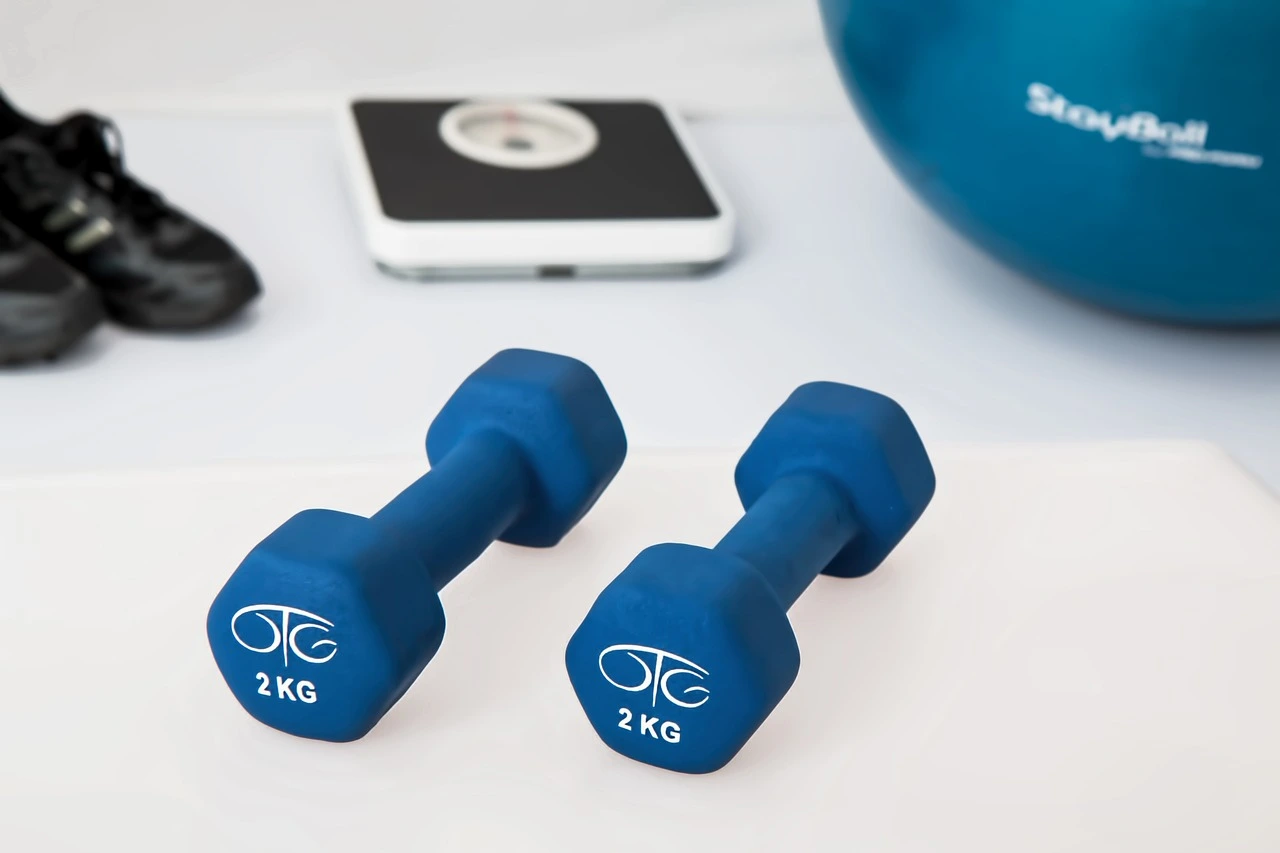When I first starting my fitness journey, I didn't want to only lose weight or gain muscle; I wanted to get both. This led me to Workouts for body recomposition, which are meant to burn fat while building muscle. Trust me, it is not as difficult as it seems! In this article, I'll explain how you can start your own body recomposition journey, if you're just starting out or an expert.
What Is Workouts For Body Recomposition
At its basic level, body recomposition is the process of growing muscle while lower fat. The aim is not always to reduce weight, but rather to adjust your body's muscle-to-fat ratio. You may even notice that the number on the scale remains constant when your body's look changes.
Read also: Best Exercise After Dinner Weight Loss Results
Benefits of Body Recomposition
Why should you worry about body structure? It's like getting two for one for your body! You will look better and feel stronger. Plus, having more muscle allows you to burn more calories even while you're relaxing around. It's like having a hidden friend who makes staying in shape simpler.
Body Recomposition Workout Routine

This is a basic training program that you may construct an exercise routine around to get your desired body composition.
For a respectable exercise, all you need is a simple gym furnished with a few deadlift/squat racks and a enough supply of dumbbells.
Day 1
- Bench Press: 3 sets of 8–12 repetitions
- Bench press with an inclined dumbbell: 8–12 reps, 3 sets
- Dumbbell flys for the chest: 8–12 reps x 3 sets
- Pullover dumbbells: 3 sets of 8–12 repetitions
- Dips: 3 sets of 8–12 repetitions final set
- End with a 15–30 minute HIIT.
Day 2
- Deadlift: 3 sets of 6–8 reps
- Hand weight shoulder press: 8–12 repetitions, 3 sets
- Dumbbell row bent over: 8–12 repetitions x 3 sets
- 8–12 repetitions, three sets, dumbbell front raises
- Pull-ups: 3 sets of 8–12 repetitions (final set to failure)
- End with a 15–30 minute HIIT.
Day 3
- 5 sets of 3–5 repetitions for barbell squats
- Lunges with dumbbells: 8–12 repetitions x 3 sets
- Bulgarian split squats: 3 sets of 8–12 repetition
- Machine leg press: 8–12 repetitions, 3 sets
- End with a 15–30 minute HIIT.
Day 4
30 to 45 minutes moderate-intensity steady-state aerobic exercise (elliptical, fast-paced run, or riding)
- Monday: first exercise
- Tuesday: take it easy
- Wednesday: second exercise
- Thursday: take it easy
- Friday: the third exercise
- Saturday: take it easy
- Sunday: four workouts
Read also: 20-Minute Cycling Workout: Maximize Your Fitness
Body Recomposition Workout Plan for Beginners

When I first started, I had no idea where to begin. If you're new to exercise or your body type, a beginner plan is a good place to start. Workouts for body recomposition may not require you to be a fitness guru, but they do require commitment. Below, I'll detail what worked for me and can work for beginners as well.
- Strength Training – Aim to lift weights three to four times each week. Focus on difficult workouts like squats, dead lifts, and bench presses. These workouts work many strong groups, making them effective for building muscle.
- Cardio – I added 20-30 minutes of low-intensity cardio after strength.
- Rest Days – Don't forget to rest! Your muscles require time to recover.
Some great exercises to start with are:
- Squats: These are ideal for your legs and bottom.
- Push-ups: These work on your chest and arms.
- Lunges: Another nice one for your legs!
- Planks: These help in honing your core.
Remember to start with weights that are hard but not impossible to achieve. It's fine to start small and work your way up!
Body Recomposition Workout Plan for Males vs. Females
While the basic ideas of body recomposition workout plan male and body recomposition workout plan female are same, there are a few slight differences based on plans and muscle division. Here's how I did it for both:
For Males
Workouts include workouts such as bench presses, pull-ups, and shoulder presses. Men mostly desire to focus on improving upper body strength. Here's an example workout:
- Bench press: 3 sets of 8-12 repetitions.
- Pull-ups or lat pulldowns: three sets of 8-12 repetitions.
- Overhead press: three sets of eight to twelve repetitions
- Rows: 3 sets of 8-12 repetitions.
- Squats: three sets of 8-12 repetitions.
Perform this workout three times each week, with at least one day off between workouts. Don't forget to do 20-30 minutes of cardio 2-3 times a week!
For Females
Many women need to work on their lower body and core strength. Here is an exercise routine that focuses on these areas:
- Squats: three sets of 12-15 repetitions.
- Deadlifts: three sets of 10-12 repetitions.
- Hip thrusts: three sets of 12-15 repetitions.
- Lunges: three sets of 10-12 repetitions each leg.
- Plank: Hold for 30-60 seconds, three repetitions.
Aim to execute this workout three times each week. For best results, incorporate 2-3 30-minute cardio workouts.In my own path, I changed several routines to fit my specific goals, but I always kept a mix of strength training and cardio.
Read also: Dumbbell Only Workout: 3 Day Full Body Dumbbell Exercise
How to Start a Body Recomposition Workout Plan at Home

You don't need a costly gym pass to get started! I started from home, and you can too. Here's a basic body recomposition workout plan at home that helped me make great growth:
Equipment-Free Exercises for Home Workouts
Here's an at-home workout that doesn't require any supplies:
- Bodyweight squats: three sets of 15-20 repetitions.
- Push-ups: three sets of 10-15 repetitions.
- Lunges: three sets of 12-15 repetitions each leg.
- Mountain climbers: three sets of twenty repetitions.
- Burpees: three sets of 10 repetitions.
Do this workout three to four times each week. For cardio, do jumping jacks, high knees, or jog in place for 20-30 minutes.
Why You Need a Body Recomposition Diet and Workout Plan
While exercises are important, I quickly found that a body recomposition diet and workout plan work hand in hand. Food is as, if not more, vital than the exercises yourself. Here's how I got the greatest results:
- Protein Intake – I made sure to ingest enough of protein, which aids in muscle healing and growth. Aim for around 1 gram of protein per pound of body weight.
- Carbs and Fats – Contrary to generally held beliefs, I did not remove lipids and carbs fully. Instead, I focus on eating varied carbs (like oats and sweet potatoes) and healthy fats (like avocados and olive oil).
- Caloric Deficit – To monitor my calorie intake, I utilized a body recomposition calculator. To reduce fat while gaining muscle, consume slightly less calories than your body burns. But don't go too low in calories or you'll lose muscle.
Read also: Week Meal Prep Ideas For Weight Loss
The Role of Rest and Recovery
I immediately realized that overtraining might be harmful. Your muscles expand while they get back, not while you're active. Here's how I made sure to recover properly all over my body balance workouts:
- Sleep – I meant for 7-8 hours of sleep each night. A lack of sleep may impede muscle recovery and raise stress levels.
- Active Rest Days – On rest days, I did more than simply laze around. Walking and yoga were light exercises that let me keep active without overworking my muscles.
- Hydration – Staying hydrated was vital, since water aids muscle repair and overall performance.
Tracking Progress Using a Body Recomposition Calculator
To stay motivated, I use a body recomposition calculator on a regular basis. It helped me track my fat a decline and gaining muscle. Here's how I suggest you use it.
|
Metric |
Formula/Details |
|
|
Basal Metabolic Rate (BMR) |
10×weight(kg) + 6.25×height(cm)6.25 × height (cm)6.25×height(cm) - 5×age(years)5 × age (years)5×age(years) + 5 (male) OR -161 (female) |
|
|
Total Daily Energy Expenditure (TDEE) |
BMR × Activity Factor (Sedentary = 1.2, Light Activity = 1.375, Moderate = 1.55, Very Active = 1.725) |
|
|
Caloric Deficit (for fat loss) |
TDEE - 250 to 500 calories (for moderate fat loss while preserving muscle) | |
|
Caloric Surplus (for muscle gain) |
TDEE + 200 to 300 calories (for muscle gain without excess fat) |
|
|
Protein Intake |
1.0-1.2 grams per pound of body weight |
|
|
Carbohydrate Intake |
2.0-2.5 grams per pound of body weight (for energy and muscle fuel) |
|
|
Fat Intake |
0.3-0.4 grams per pound of body weight (for hormone balance and satiety) |
|
|
Body Fat Percentage |
Measure with calipers, bioelectrical impedance, or DEXA scans to track progress. |
|
|
Lean Body Mass |
Total Weight - (Body Fat % × Total Weight) |
|
|
Fat Loss Goal |
Aim for 0.5-1 pound of fat loss per week. |
|
|
Muscle Gain Goal |
|
How to Use This Table:
- Calculate your BMR: Based on your weight, height, and age, use the BMR calculation.
- Find your TDEE: To get an estimate of how many calories you burn each day, multiply your BMR by your activity factor.
- Set your caloric goal: Adapt your daily calorie intake based on whether your goal is muscle building or fat reduction.
- Track macronutrients: To assist body recomposition, make sure you're eating right amounts of lipids, carbohydrates, and protein.
- Monitor body fat and lean mass: To monitor your progress, compute lean mass and measure your body fat percentage on a regular basis.
Body Recomposition vs. Traditional Weight Loss
I used to believe that weight a decline was the only way to seem thinner, but body recomposition offers an important advantage. Here's what I realized via personal experience.
- Weight Loss Alone – With typical weight loss, I lost both fat and muscle. This made me feel weaker and less toned.
- Body Recomposition – Even though my weight did not change much, focused on muscle training while reducing fat made me seem more toned.
Read also: Somatic Exercises For Weight Loss Free
Common Mistakes to Avoid in Body Recomposition
Even with the best intentions, it's easy to make mistakes. Let's talk about some common ones and how to avoid them.
Pitfalls and How to Overcome Them
- Doing too much, too soon: Start slowly and progressively increase your exercises.
- Not eating enough: Your body need fuel to grow muscle.
- Focusing just on cardio: Strength training is required for body recomposition.
- Expect immediate results: Body recomposition requires time. Be patient!
- Not getting enough rest. Your body needs time to heal and grow muscle.
Remember that slow and steady wins the race when it comes to body composition.
Key Takeaways for Starting Your Own Body Recomposition Journey
- Consistency Is Key – Whether you're a beginner or more advanced, consistency with both diet and exercise is what will get you results.
- Strength Training Matters – Focus on building muscle through weight training. This will help you burn more fat in the long run.
- Eat Enough Protein – Make sure you’re getting enough protein in your diet to support muscle growth.
- Use a Body Recomposition Calculator – Tracking your progress through measurements and body fat percentage is more important than just weighing yourself.
Conclusion
One of the best choices I've made was to transform my looks with workouts for body recomposition. It wasn't just about reducing weight; it was about being stronger, leaner, and more comfortable in my own flesh. If you're ready to take the next step in your fitness quest, consider these techniques. Whether you're working out at home or at the gym, remember that progress, not perfection, is the goal.
FAQ's
How long does it take for body recomposition?
Twelve to sixteen weeks
What is the duration of body recomposition? It's particularly personalized as each person has a different beginning point. Nonetheless, after 12 to 16 weeks, the majority of novice exercisers may see significant changes in their bodies.
How many days a week should I workout for body recomposition?
As you advance, work your way up to three or four days a week from where you are now at. To further push your muscles to get stronger, make sure you gradually increase the weight you lift over time (a technique known as progressive overload).
How to train for body recomposition?
- Follow a diet low in calories.
- 1.6–2.2 grams of protein for every kilogram of body weight should be consumed.
- implementing a strength training regimen in which you progressively lift larger weights.
- Cardiovascular activity may improve general health and help you burn more calories.
Does body recomposition lose belly fat?
Research indicates that body recomposition enhances cardiovascular fitness, boosts energy levels, and aids in fat loss and lean muscle mass growth. It could also enhance general wellness and help you sleep better.
What is the best split for recomp?
For body recomposition, a macronutrient ratio of around 40% protein, 30% fats, and 30% carbs is optimum. These ratios typically correspond with the USDA Acceptable Macronutrient Distribution Ranges (AMDR), even though it is at the lower end of the carbohydrate spectrum.







.webp)